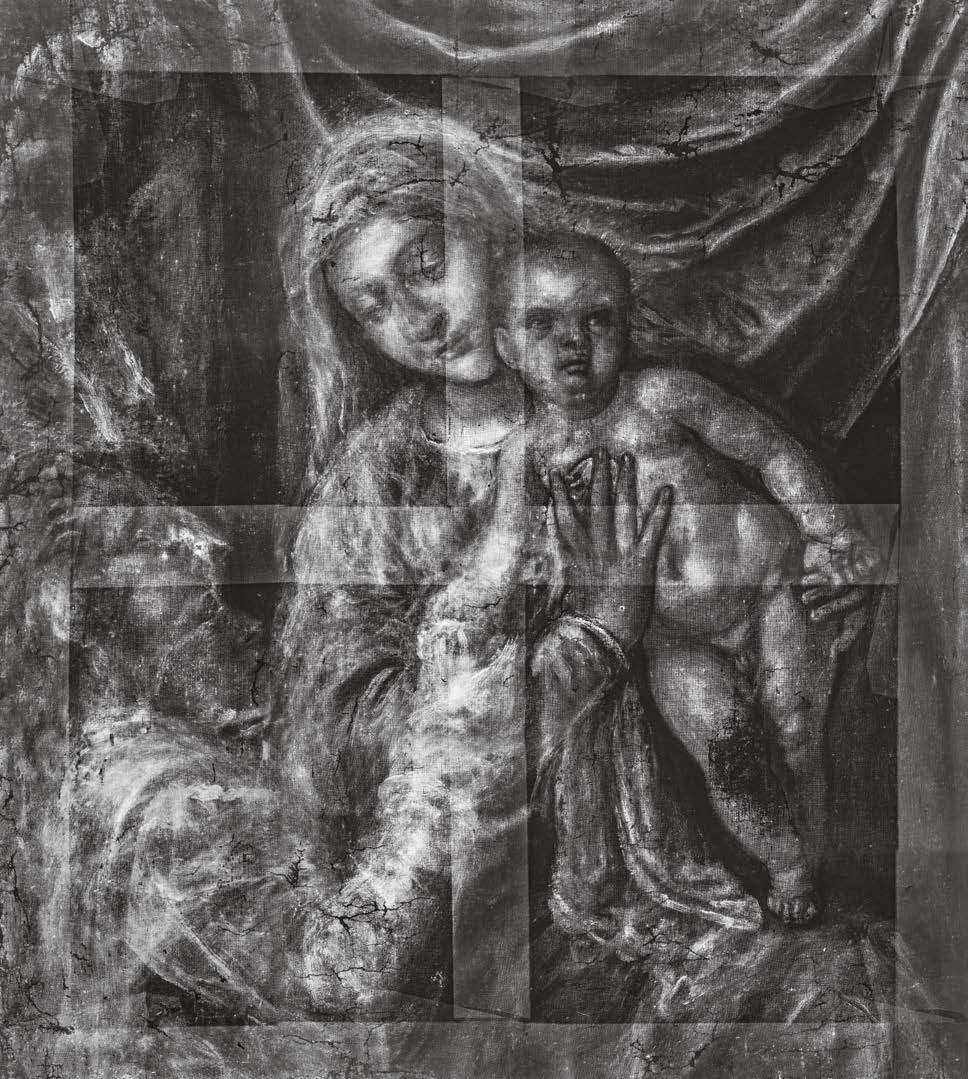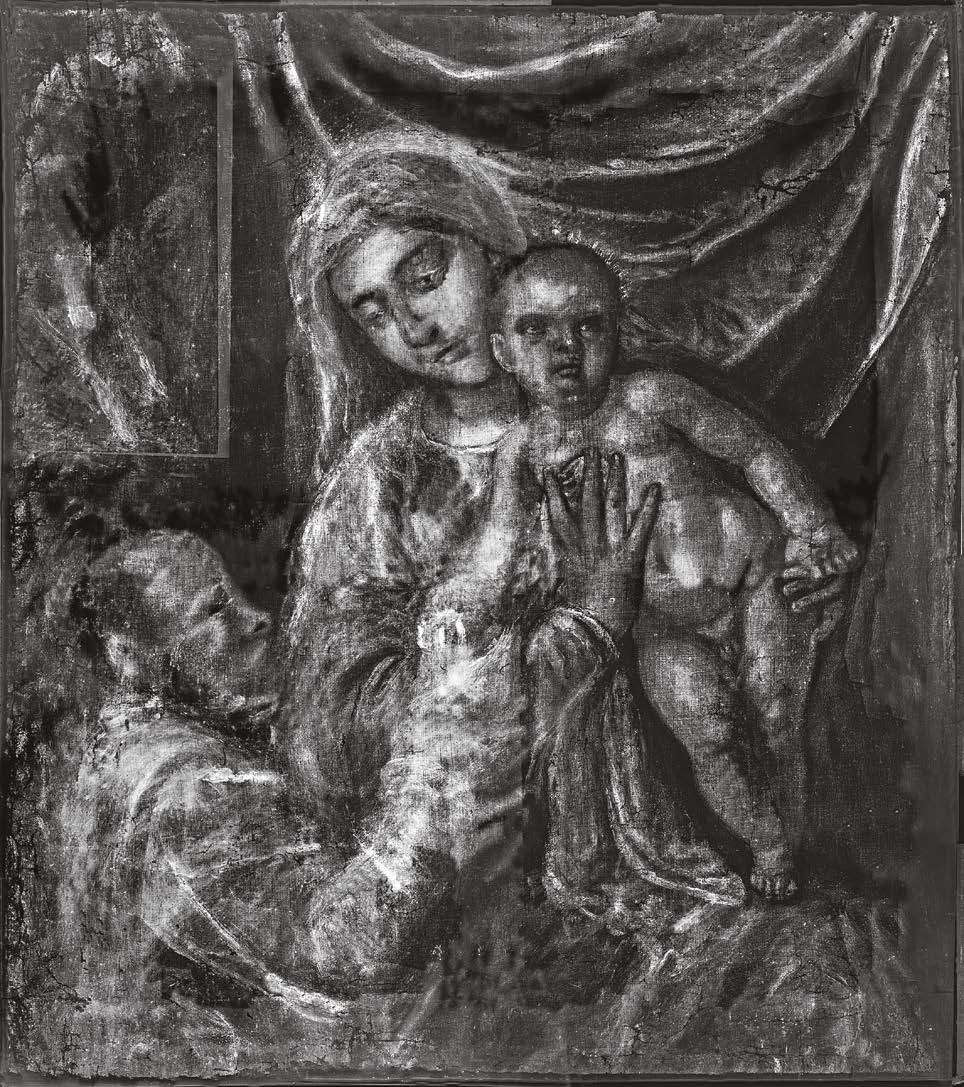A Rediscovered Titian: thus titles the publication that the Carlo Orsi gallery presented at the 2024 edition of the Florence Biennale Internazionale dell’Antiquariato to show the public a Madonna and Child with Magdalene by Titian Vecellio (Pieve di Cadore, 1488/1490 - Venice, 1576), which re-emerges on this occasion after a collecting affair that began in 1937, the year the work is first documented (the price, the gallery told us, is confidential). It is a painting with a relatively recent history, since it was published in 1952 by Wilhelm Suida, in an article in Arte Veneta. At the time it was in a private collection in New York and, according to Suida, was the prototype of other similar versions that Titian made in the last decades of his career (the best version, excluding the painting presented by Carlo Orsi, is probably the one in the Hermitage in St. Petersburg, which was formerly in a palace of the noble Barbarigo family in Venice). However, the judgment on this work was conditioned by the position of Giovanni Battista Cavalcaselle, who upon seeing the Barbarigo version even considered it to be the work of a pupil, perhaps Titian’s son Marco. Other replicas, now identified as workshop, are in the Uffizi (which gave it on deposit to the Chamber of Deputies) and the National Museum of Capodimonte.
After the publication of Suida, the Madonna now by Carlo Orsi became the object of critical attention: several scholars, however, expressed perplexity or did not include the painting in their reconnaissance of Titian. Among those in favor, however, can be mentioned Federico Zeri , who viewed the work privately and had no doubts in communicating to the owner, in writing in 1991, his favorable opinion (he considered it a work of 1555-1560). The waters around this painting swirled especially in 2006, when Hungarian art historian Vilmos Tátrai discovered another version of the work in a private Hungarian collection (in this variant, Saint Paul appears instead of Magdalene), and in 2017, when the Museo Civico in Belluno an exhibition was held in which the Madonna Barbarigo from the Hermitage was compared with the Hungarian version discovered a few years earlier and with the Uffizi version. On the latter occasion, the scholar Denis Ton, although he could not see Carlo Orsi’s work in person (at the time it was known only from photographs), considered it, when compared with the other variants, to be an autograph work, even though Titian had worked in his opinion with help. And to the same conclusions would come in 2022 Irina Artemieva, who had co-curated the Belluno exhibition together with Ton and believed it plausible that Titian had executed the work in part, returning to it even several years after its date of execution.

Long ago many scholars already agreed that the work in question shows the intervention of several hands: at its presentation at the BIAF in 2024, following Enrico Maria Dal Pozzolo’s study, the painting was presented as a work by Titian, with intervention by Girolamo Denti. Suida had discerned that the Virgin’s red robe and blue mantle, in addition to the Child’s white shawl and green curtain, show older execution than the shawl covering the Virgin’s head and shoulders and most of Magdalene’s dress. The haloes would also have been made at a later date in his opinion. Dal Pozzolo, in his study, added a further observation, namely the fact that the head and hand of the Magdalene denote a marked difference in quality and conduction, such that one would inevitably think of another artist who helped Titian, one of his collaborators.
The double intervention was also confirmed by an X-ray taken during a campaign of noninvasive diagnostic analysis conducted in late spring 2024 by Giuseppe and Luciano Malcangi. However, X-ray analysis revealed that the double intervention did not involve the areas identified by Suida. Indeed, on the left in the X-ray, one can easily see the presence of a window that was later covered: Titian, therefore, wanted to set the scene differently at an early stage. Moreover, the Child had a ray halo, no coral necklace, his right hand was turned upward, and the Virgin’s cloth covered his knee. The most glaring repentance, however, is in the figure of the Magdalene: initially, in fact, Titian had painted a male figure, complete with beard, offering something to the Child (although it is not clear what).
According to Dal Pozzolo, a plausible explanation could be that the painting was made for a patron who died before the painting was finished or who, for some reason, did not pick it up: remaining in Titian’s workshop for several years, it was modified to transform the male figure into a Magdalene through the intervention of a collaborator whom, for stylistic reasons, Dal Pozzolo identifies as Girolamo Dente. It was, moreover, he who also included the bizarre palm of martyrdom, a rather odd detail given that Mary Magdalene was not a martyr: The reason for this addition is unknown, and no plausible explanation has yet been found (Dal Pozzolo is quick to dismiss “borderline absurd” possibilities such as theidea that the figure represents Neomisia, a virgin martyr revered at Anagni who has the jar as an iconographic attribute, or even more far-fetched hypotheses, for example, the idea that the work is the cryptor-portrait of a woman named Magdalene who died a violent death). Finally, as far as the chronology of the painting is concerned, based on affinities with other works believed to be similar (such as theAnnunciation now in the Museo Nazionale di Capodimonte), Dal Pozzolo proposes a realization between 1557 and 1559, with an initial redaction possibly dating to the early 1550s.




 |
| A Titian rediscovered: at BIAF, Carlo Orsi resurfaces work by the master |
Warning: the translation into English of the original Italian article was created using automatic tools. We undertake to review all articles, but we do not guarantee the total absence of inaccuracies in the translation due to the program. You can find the original by clicking on the ITA button. If you find any mistake,please contact us.